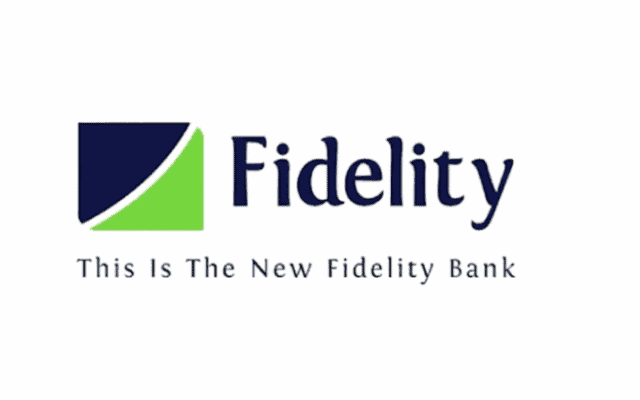How to Write the Perfect Business Proposal
A well-crafted business proposal can make or break a company in today’s competitive business market. It’s your chance to showcase your skills, define your solutions, and persuade potential clients or investors that you’re the best choice. However, making a business proposal is more than just putting words on paper; it is also about properly conveying your ideas. We’ll walk you through the steps of creating a business proposal that stands out and boosts your chances of success in this article.
Also, check out How To Write A Query Letter.
Advertisement
Understand Your Audience
Take the time to study your audience before you begin crafting your business proposal. Are you looking for a new client, an investment, or a business partner? What are their concerns, requirements, and expectations? It is critical for success to tailor your proposal to the specific needs of your audience. It demonstrates that you’ve done your research and are really interested in resolving their issues.
Research and Gather Information
To produce a convincing business proposal, you must have current and correct information. Details on the industry, market trends, your competition, and the client’s or investor’s background are all included. The more knowledgeable you are, the more credible and trustworthy your proposal will appear.
Start with a Strong Executive Summary
The executive summary is the first thing your readers will read, and it should immediately capture their interest. This part should include a brief overview of the full proposal, emphasizing major points, benefits, and outcomes. Keep it interesting and make the reader want to learn more about your proposal.
Advertisement
Clearly Define the Problem
Your business proposal should focus on a specific issue or problem. Define the issue and explain why it is relevant to your audience. Use data and statistics to back up your position and show that you understand their concerns.
Offer a Compelling Solution
Present your answer once the problem has been well comprehended. This is the centerpiece of your proposal. Explain your approach, methodology, and how you intend to tackle the problem. To demonstrate your competence, use actual examples and case studies.
Showcase Your Unique Value Proposition
What distinguishes your proposal? Emphasize your distinct value offer. Explain why your solution is superior to competitors’ and how it meets the specific needs of your target audience.
Provide a Detailed Scope of Work
Your proposal should include a detailed plan for implementing your solution. Include as many details as feasible, such as dates, milestones, and deliverables. A well-defined scope of work demonstrates that you have considered the entire process.
Discuss Budget and Pricing
When it comes to budgeting and pricing, transparency is essential. Present the costs of your proposal clearly and explain how the investment will benefit your client or investor. To enable flexibility, offer several pricing options whenever possible.
Include a Call to Action
Finish your proposal with a strong call to action. What will be the next step? Do you want them to meet with you, sign a contract, or make an investment? Make it clear and simple for them to act.
Review and Edit
Review and modify your proposal thoroughly before submitting it. Examine your wording for grammatical faults, uniformity in formatting, and clarity. A polished proposal demonstrates your professionalism.
Consider Design and Presentation
While content is important, the design and presentation of your proposal are equally important. A clean, visually appealing layout can increase the appeal of your proposal. Where applicable, use graphics, charts, and graphs to illustrate crucial concepts.
Also, check out How to Write a Resignation Letter.
Appendices and Supporting Documents
Appendices and supporting materials should be included at the conclusion of your proposal. Case studies, testimonials, references, or your company’s credentials could all be included.
Establish Trust and Credibility
Throughout your proposal, use factors that foster trust and credibility. Mentioning your company’s track record, industry qualifications, client testimonials, or relevant accolades could be included. By demonstrating your credibility, you instill trust in potential clients or investors.
Keep it Concise
While it is critical to include detailed information, avoid making your proposal too long. A well-structured and brief work is more likely to keep the reader’s attention. Make every word count, and get rid of everything unnecessary or extraneous.
Use a Persuasive Writing Style
Your writing and language should be powerful and compelling. Use powerful, action-oriented verbs and a confident tone. Be persuasive without being confrontational, and show your enthusiasm for your recommended solution.
Address Potential Concerns
Anticipate and answer any objections or worries that your audience may have. By proactively addressing these concerns, you indicate that you’ve thought through the entire process and are prepared to deal with any problems that may occur.
Proofread and Seek Feedback
Proofread your proposal completely before submitting it to catch any typos or errors. Seek comments from coworkers or mentors as well. Fresh eyes can bring significant insights and aid in the refinement of your proposal.
Testimonials and Case Studies
Client testimonials and case studies can lend credibility to your proposal. Real-world examples of your success stories might assist potential clients or investors see the benefits of partnering with you.
Emphasize Benefits and Outcomes
While describing the details of your solution is important, focus on the benefits and outcomes it will provide. How will your proposal simplify the client’s life, save money, or enhance revenue? When feasible, be detailed and offer quantitative facts.
Follow Up
Don’t just sit and wait for a response after you’ve submitted your proposal. Follow up with your prospective client or investor to answer any questions they may have and to address any additional issues they may have. A timely follow-up indicates your dedication and response.
Also, check out Personal Statement: How it is and How to Write a Good One.
Customize for Each Recipient
A one-size-fits-all approach should be avoided. Make your proposal unique to each recipient in order to address their distinct requirements and concerns. This customization demonstrates that you have made an effort to grasp their specific situation.
Be Mindful of Formatting
Your proposal’s formatting should be consistent and professional. To make the information easier to navigate, use headings and subheadings. Maintain a professional look and feel throughout by using understandable fonts.
Set Realistic Timelines
Make sure that the timelines you give in your proposal are reasonable and doable. Overpromising and failing to fulfill deadlines can have a negative impact on your reputation. It is preferable to underpromise and overdeliver.
Know When to Walk Away
Not every proposal will result in a successful partnership or transaction. It’s sometimes best to accept rejection gently and move on. Learn from your mistakes and apply the criticism to enhance future proposals.
Conclusion
To summarize, producing a business proposal is a multidimensional effort that necessitates a strategic approach, excellent communication, and a thorough understanding of your target audience. You may improve your proposal-writing skills and increase your chances of earning significant opportunities in the competitive business world by following these additional ideas and best practices. Best wishes for your future business proposals!
Before you go, check out How To Write a Loan Application Letter.






